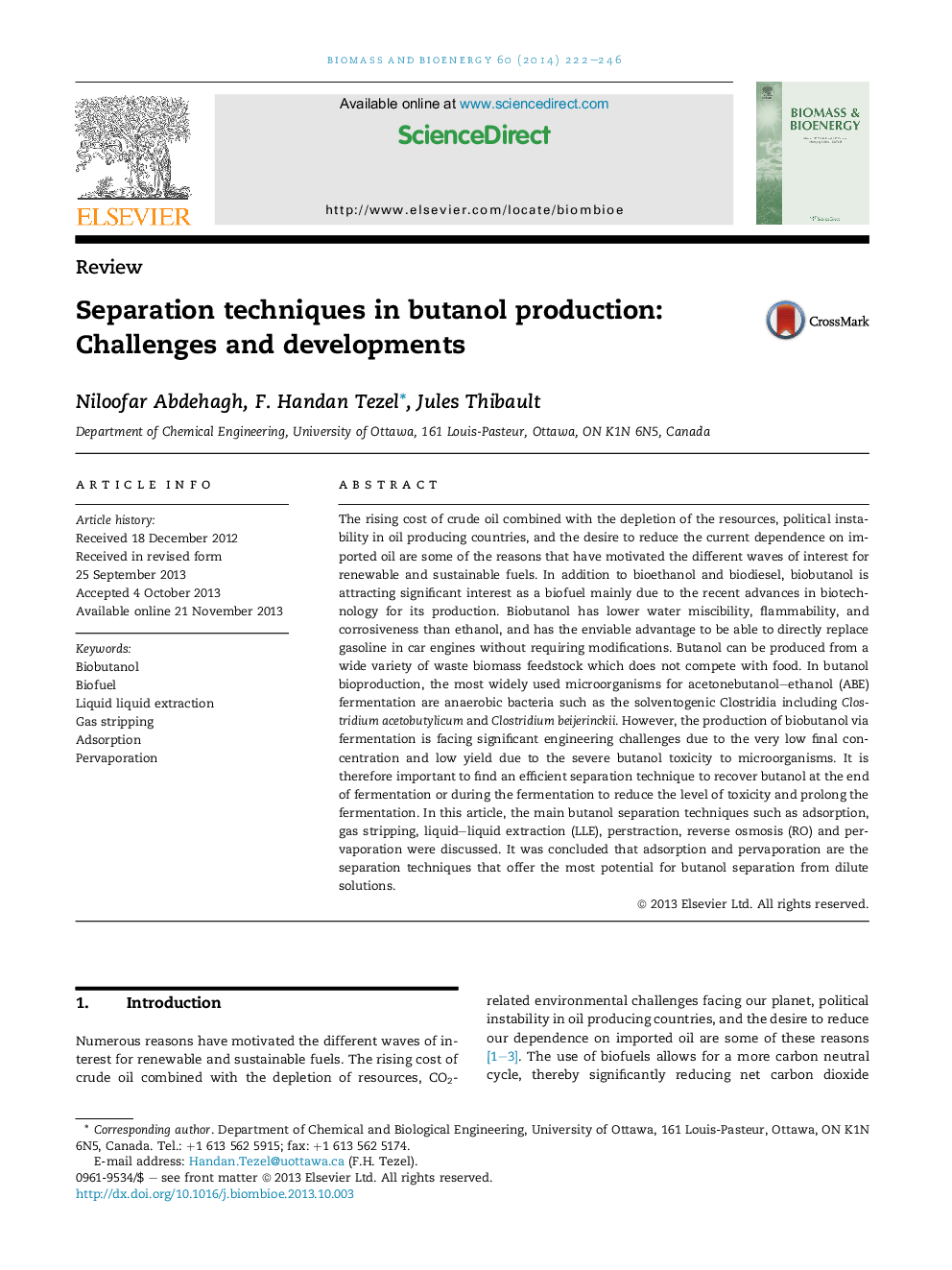| کد مقاله | کد نشریه | سال انتشار | مقاله انگلیسی | نسخه تمام متن |
|---|---|---|---|---|
| 676866 | 1459833 | 2014 | 25 صفحه PDF | دانلود رایگان |
• Butanol separation from dilute solutions and fermentation broths was reviewed for butanol production processes.
• Gas stripping, liquid–liquid extraction, reverse osmosis, adsorption, perstraction and pervaporation were considered.
• The results achieved using these different separation techniques for butanol separation were provided and compared.
• The advantages and disadvantages of each separation technique were summarized based on literature data.
• Insights of the authors toward the future work needed in the field of butanol separation from ABE fermentation were stated.
The rising cost of crude oil combined with the depletion of the resources, political instability in oil producing countries, and the desire to reduce the current dependence on imported oil are some of the reasons that have motivated the different waves of interest for renewable and sustainable fuels. In addition to bioethanol and biodiesel, biobutanol is attracting significant interest as a biofuel mainly due to the recent advances in biotechnology for its production. Biobutanol has lower water miscibility, flammability, and corrosiveness than ethanol, and has the enviable advantage to be able to directly replace gasoline in car engines without requiring modifications. Butanol can be produced from a wide variety of waste biomass feedstock which does not compete with food. In butanol bioproduction, the most widely used microorganisms for acetonebutanol–ethanol (ABE) fermentation are anaerobic bacteria such as the solventogenic Clostridia including Clostridium acetobutylicum and Clostridium beijerinckii. However, the production of biobutanol via fermentation is facing significant engineering challenges due to the very low final concentration and low yield due to the severe butanol toxicity to microorganisms. It is therefore important to find an efficient separation technique to recover butanol at the end of fermentation or during the fermentation to reduce the level of toxicity and prolong the fermentation. In this article, the main butanol separation techniques such as adsorption, gas stripping, liquid–liquid extraction (LLE), perstraction, reverse osmosis (RO) and pervaporation were discussed. It was concluded that adsorption and pervaporation are the separation techniques that offer the most potential for butanol separation from dilute solutions.
Journal: Biomass and Bioenergy - Volume 60, January 2014, Pages 222–246
